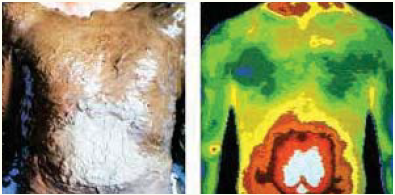The proposed regulations would require that women be informed if they have dense breast tissue and the significance of it with regard to the accuracy of their mammograms and breast cancer risk.

The U.S. Food and Drug Administration (FDA) proposed new regulations yesterday to require mammography facilities to provide more and better information to patients and their doctors, especially for women with dense breast tissue, which can make it more difficult to detect breast cancer.
Mammograms of dense breasts — those with a higher proportion of fibroglandular tissue compared with fatty tissue — can be difficult to interpret. Dense breasts have also been identified as a risk factor for developing breast cancer, the FDA said in a press release from March 27, 2019.
The FDA is proposing specific language to explain to patients and healthcare providers how dense breasts can influence the accuracy of mammograms. The agency is also recommending that patients with dense breasts discuss with their doctors how this relates to their individual risk of breast cancer.
Under the proposed regulations, information regarding dense breasts will be included in the lay summary letter provided to patients and the medical report provided to their healthcare providers.
Dense Breasts — A Common Phenomenon Even Over 40
Dense breasts are common. Nearly one-half of women age 40 and older who get mammograms are found to have dense breasts, the American Cancer Society says. Breast density can be inherited. Factors that reduce it include increasing age and having children.
Women with dense breasts are often advised to have an ultrasound examination, in addition to a mammogram. Ultrasound typically picks up about 3 cases of cancer per 1,000 people whose cancer did not show up in mammograms.
Regulations Would Also Tighten Mammography Standards
The FDA’s proposed amendments would also modernize mammography quality standards and put the FDA in a better position to regulate and take action when violations are found. Some of these proposed changes include:
- Giving the FDA explicit authority to notify patients and healthcare professionals when a mammography doesn’t meet quality standards
- Requiring the mammography facilities use only components approved or cleared for mammography
- Strengthening record-keeping to improve access to mammography records
The FDA believes the new rules can help prevent, detect, and treat breast cancer, said Amy Abernethy, MD, PhD, principal deputy commissioner for the FDA. “Helping to ensure patient access to information about the impact that breast density and other factors can have on the risk for developing breast cancer is an important part of a comprehensive breast health strategy,” she said in a statement.
The proposed rule will be published March 28, 2019, in the Federal Register, and then will be open 90 days for public comment.












